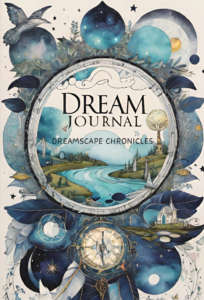In the quiet of the night, when the world slips into slumber, our minds embark on journeys untethered by the constraints of reality. These voyages, known as lucid dreams, where the dreamer becomes aware that they are dreaming, offer an unparalleled opportunity for creativity and self-exploration. Imagine being able to compose music that defies physics, paint landscapes that shimmer with emotions, or script tales that intertwine dimensions.
Understanding the Power of Lucid Dreams
Lucid dreaming transcends ordinary dreaming by offering a unique sphere where conscious control and the subconscious mind blend seamlessly. This immersive state of dreaming enables individuals to deliberately navigate and mold their dreamscapes, experiencing scenarios with a depth and clarity that can often surpass waking experiences. The significance of lucid dreams extends beyond their novelty; they are a potent conduit for creativity, problem-solving, and introspection. Engaging in lucid dreaming facilitates a dialogue with the deeper layers of the self, allowing for an exploration of hidden desires, fears, and potentials.
It’s a space where conventional barriers of thought and creativity dissolve, encouraging innovative thinking and artistic experimentation. By mastering lucid dreaming, one can access a boundless realm of inspiration, where every dream becomes a canvas for the imagination, a laboratory for ideas, and a sanctuary for self-discovery. This capacity to interact with and influence one’s dreamscape not only enriches the creative process but also fosters a profound connection with the inner workings of the mind, paving the way for breakthroughs in personal and artistic growth.
Preparing Your Mind and Space for Lucid Dreaming
Embarking on the journey of lucid dreaming begins with intentional preparation, creating an environment both within and around you that is conducive to unlocking this unique state of consciousness. Cultivate a mindset of curiosity and mindfulness throughout your day.
Your physical space plays a crucial role in facilitating lucid dreams. Transform your bedroom into a tranquil haven that promotes relaxation and introspection. Ensure your mattress and pillows offer the right support and comfort for a restful sleep. Minimize external noise and light pollution with blackout curtains or a sleep mask and consider using white noise machines or earplugs if necessary.
Place a dream journal and a pen beside your bed, making it easy to record your dreams immediately upon waking. This act of recording can help solidify the memory of your dreams and is essential for developing the ability to become lucid within them. Also, engage in a pre-sleep routine that includes relaxation techniques such as meditation or deep-breathing exercises to calm the mind and signal to your body that it’s time to delve into the world of dreams. By mindfully preparing both your mind and your space, you create the optimal conditions for embarking on the vivid and transformative journey of lucid dreaming.
Techniques for Initiating Lucid Dreams
Initiating lucid dreams intentionally requires practice and patience, employing specific techniques designed to foster self-awareness in the dream state. Visualization plays a significant role in inducing lucid dreams. Prior to sleep, vividly imagine yourself in a dream, focusing on engaging all your senses to create a realistic scenario. This process can be enhanced by imagining a specific trigger within the dream that will remind you that you’re dreaming, such as flying or seeing a particular object.
Consistency in these practices is key to success. It’s important to experiment with different techniques to discover what best aligns with your personal inclinations and sleep patterns. Integrating these practices into your nightly routine can gradually increase your chances of experiencing lucid dreams, opening the door to profound creative exploration and personal insight. Remember, lucidity in dreams is a skill that, like any other, requires time and dedication to develop.

> Dreamscape Chronicles: Journal For Recording Your Dreams <
Journaling Your Lucid Dreams for Creative Expression
Immediately upon awakening, it’s essential to capture as much detail from your lucid dreams as possible. Document not just the events and visuals but also the emotions felt and the dynamics between characters or elements. This could include the texture of imagined landscapes, the sounds within the dream, or the dialogue between dream entities. Such vivid recollections serve as a fertile ground for creativity, providing raw, untapped material that can inspire new works or solve artistic challenges.
As your dream journal grows, it becomes a repository of unique ideas and concepts. An unusual narrative twist experienced in a dream, for instance, might become the basis for a compelling short story. A dreamt melody could lay the foundation for a new musical composition. The key is to revisit your journal entries regularly, mining them for gems that spark your creative interest. Allow the peculiar logic and boundless possibilities of your dream world to influence your waking creativity, pushing the boundaries of what you thought possible.
This practice of documenting and revisiting your lucid dreams creates a loop where dreams influence art, and the creative process itself feeds back into your dream life, enriching it. Thus, a dream journal is not just a passive record but an active tool in the creative process, bridging the gap between the subconscious wonderland of your dreams and the tangible creations of your waking life.



Interpreting Your Dreams for Deeper Insight
Lucid dreams, with their vivid imagery and emotional depth, are ripe for interpretation, offering a mirror into the subconscious mind. Each symbol, character, and scenario encountered in this dreamscape can serve as a clue to understanding deeper personal truths. The process of deciphering these dream elements requires a willingness to delve into the nuances of your psyche, looking beyond the surface to uncover the meanings hidden within.
When interpreting your dreams, pay close attention to the feelings they evoke and the symbols that are most prominent. A seemingly mundane object or event might hold significant personal relevance, offering insights into your fears, desires, or unresolved emotions. It’s essential to approach this interpretation with an open heart, recognizing that the dream’s meaning might not be immediately apparent.
Reflection plays a crucial role in this exploration. Consider how the themes or symbols in your dreams might relate to your waking life, relationships, or inner conflicts. This introspective practice can illuminate patterns of thought or behavior that are influencing your personal growth and creative expression.
Engaging in this interpretative process enriches your understanding of yourself and enhances your creative endeavors. By exploring the symbolic language of your dreams, you unlock a deeper dimension of creativity, drawing from a well of insights that inform and inspire your artistic journey. This exploration not only fuels your creative projects but also fosters a deeper connection with your inner self, cultivating a rich soil from which new ideas and perspectives can grow.
Applying Your Dream Insights to Your Creative Process
Harnessing the insights derived from lucid dreaming can profoundly shape and invigorate your artistic pursuits. These nightly visions provide a reservoir of untapped creativity, waiting to be integrated into your conscious creative endeavors. Delving into your dream journal regularly, let the peculiar narratives, vivid imagery, and raw emotions documented there influence and inform your art. Make connections that might not be apparent at first glance, allowing the abstract and fantastical elements of your dreams to inspire innovation and fresh perspectives in your work.
Engage deeply with the themes and symbols uncovered in your dream analysis. This reflective practice can reveal undercurrents of thought and emotion that subtly shape your creative voice. Incorporate these insights into your projects, letting them guide your artistic decisions and infuse your work with a depth and complexity that resonates on a subconscious level.
The process of translating dream insights into tangible creative output encourages a fluid, dynamic interaction between the dream world and waking reality. This interaction not only enhances your art but also enriches your personal growth, fostering a cycle of continuous inspiration and exploration. By inviting the limitless imagination of your dreams into your creative process, you break free from conventional constraints, opening up a realm of possibilities where innovation thrives.






